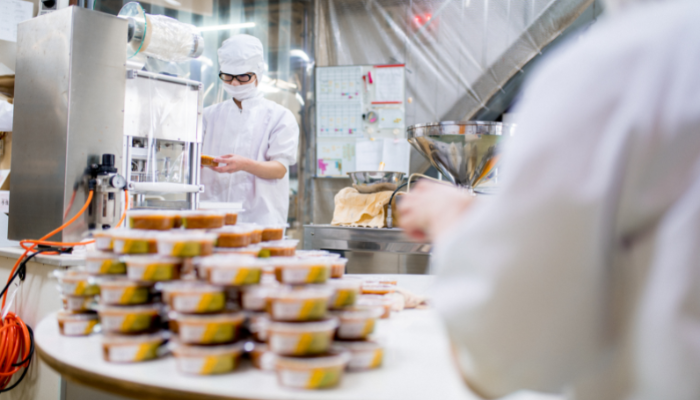Over the last few years, the food manufacturing industry has had to adapt business operations to be in line with the COVID-19 restrictions. Many businesses had no time to plan, and quite often decisions were last minute without much direction. Last year, businesses began to recover, but it was not without major changes, ranging from limited staffing, new stringent safety standards and a big shift in consumer habits. Many food manufacturers had little choice but to move with the new consumer demands. With all of these changes, here are four predicted trends for the food manufacturing industry for 2022.
Increased safety standards
While the COVID-19 pandemic has diminished, food manufacturing businesses can expect more health and safety inspections on a regular basis. With the easing of social distancing and with employees fully vaccinated, many factory workers have returned to work. With more staff on the factory floor, this means tighter precautions, which could cause disruption to the supply chain processes. The next 12 months will be a testing time for food manufacturers, ensuring they meet the government health and safety regulations.
Supply chain overhaul
The food manufacturing industry has relied on the just-in-time supply chain model for years. Even though this model does cut costs for businesses, COVID-19 proved that the supply chain model will need a massive overhaul. Any business that relies on a just-in-time supply chain know the drawbacks. It’s difficult to change orders, as the inventory is kept to a minimum and only based on the customers’ original orders. In addition, the just-in-time model depends on suppliers’ performance and timeliness, which has been made all the more difficult with the impact of COVID-19. Experts have said the current supply chain playbook has been ripped up, and there has been a big shift across the food industry to a just-in-case model. For those businesses still using the just-in-time model, their inventory needs to be tracked and well organised, which is difficult to do manually. Implementing an Enterprise Resource Planning (ERP) system will make the whole process easier to manage. If your business is not already using an ERP, this should be a key implementation in 2022.
Implementing an Enterprise Resource Planning system
With changes to the supply chain and staffing limitations, businesses need to be savvier with their production processes. To help streamline your processes and reduce costs, an ERP customised for the food industry will help you gain visibility across your business. In addition, an ERP system will get your inventory under control as it enters and exits your warehouse. Inventory management software is designed to track each item as it passes through your warehouse. It monitors the product longevity, location and how fast it is moving off the shelf — all key aspects of your business. Having this information at your fingertips means better business intelligence, which can help you make informed business decisions about products, from the raw ingredients to how well something is selling. Knowing your business intelligence is critical to the success of any business. Visibility and real-time data help companies control costs, giving a big-picture view of how your business is growing.
Big shift in consumer habits
The biggest shift for the food manufacturing industry is undoubtedly the way COVID-19 has impacted customers’ shopping habits. The two key areas are healthier food choices and online ordering. The pandemic put a new spin on the availability of healthy foods, with many consumers focusing on their immune systems and better eating habits. Working from home meant less physical activity, which also impacts on consumers’ dietary requirements. This shift in diet, combined with the rise of plant-based foods, means many companies in the food industry might have to reconsider their products and promotion. During the pandemic, we witnessed a large rise in online shopping, from home delivery to click-and-collect. In Australia Post’s eCommerce report for 2020/2021, it reported that online goods spending was up 57% since 2019. With this switch to online ordering, it is increasingly important that food manufacturing factors in this change in consumer behaviour. While the pandemic created challenges, it also created an opportunity for innovation and change, and this shift may be here to stay.
What’s next?
When searching for the right software for your business, seek expert advice, and this is where Acacia can help. We have provided business software solutions to more than 500 companies, and we understand the difficulties businesses face. Our consultants can help explain the details of the software to you. We also have long-standing experience in serving clients in the food manufacturing industry which gives us a deeper understanding of your business needs and we are better placed to advise you on the best solution. If you are interested in talking through the advantages of using a cloud ERP to track food traceability contact us and one of our consultants will be in touch soon.


